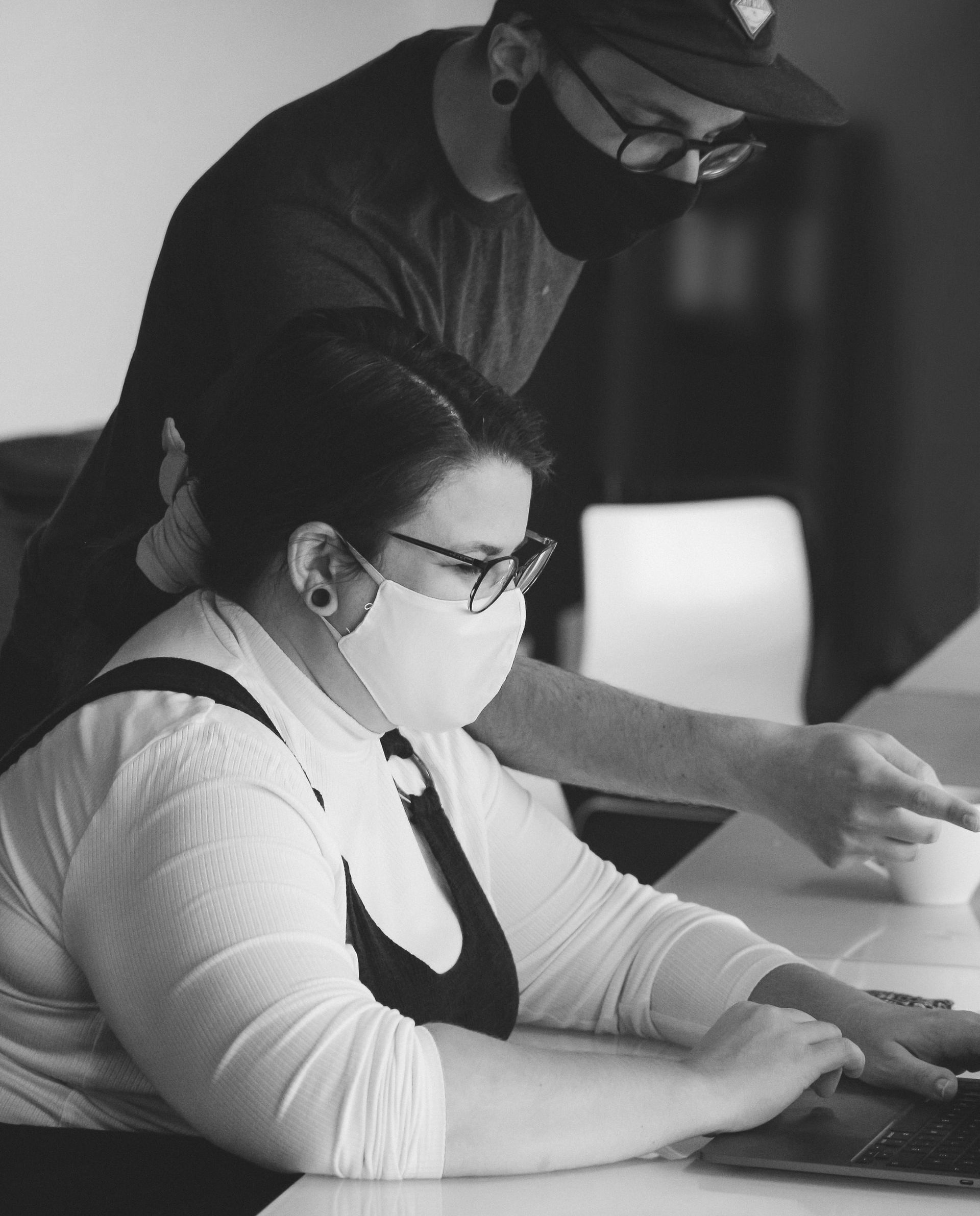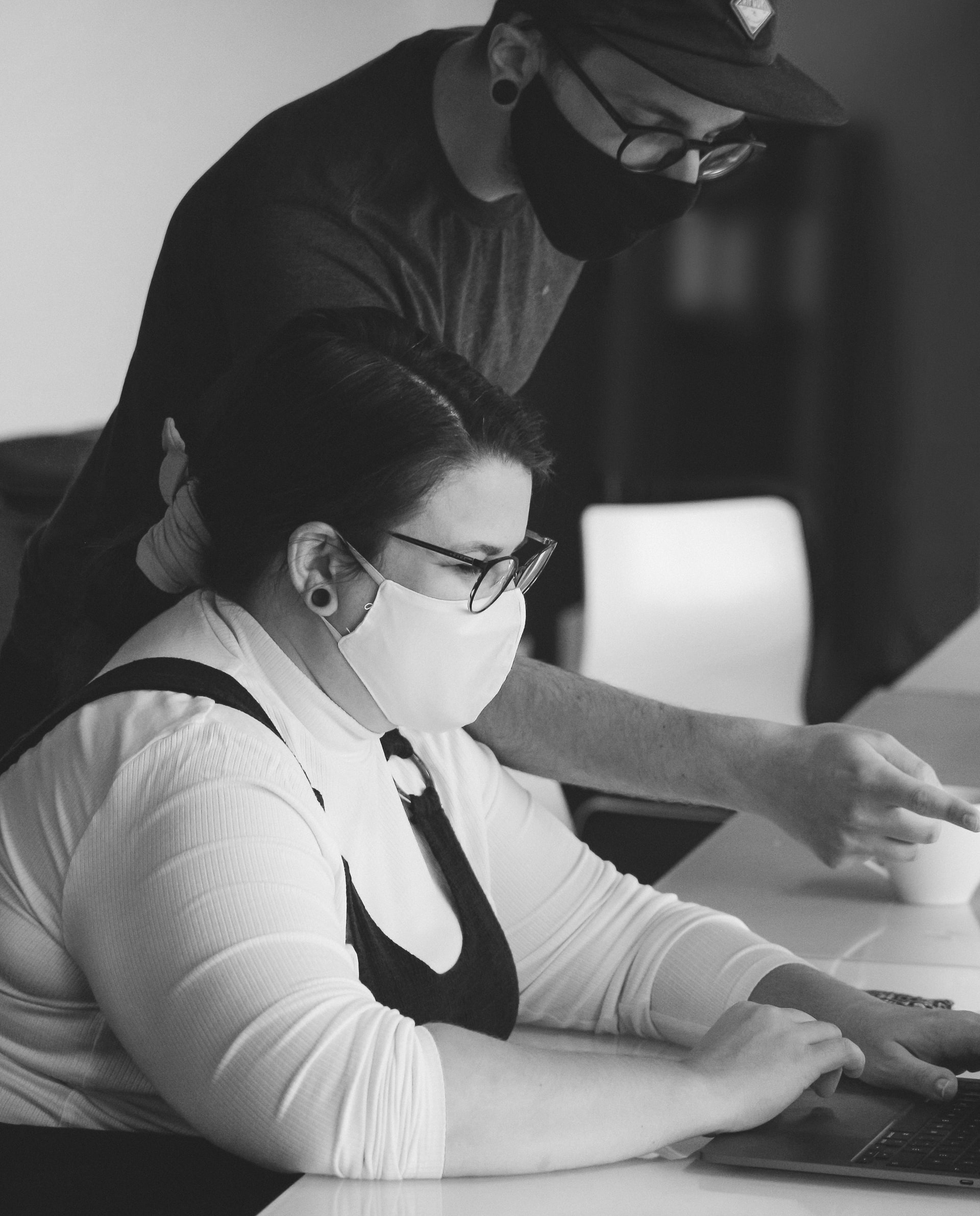Going back to the office for many of us feels like an unsolvable logic puzzle; a melange of employee voices shouting over one another with different needs, priorities, and anxieties. Get it right, and the gains could be extraordinary – but get it wrong, and the organization could find itself on the slippery slope of decline, as people leave, productivity plummets, and profitability stalls.

A recent global survey of 30,000 workers found 41% of workers were planning to quit or change professions this year. This turnover tsunami won’t come as much surprise to HR professionals, who’ve been long warning of the link between uncertainty, anxiety, engagement, and eventually, employee turnover.
Escalating burn-out and workplace stress are testament to the same – profound discontent and plummeting well-being across our workforces.
Organizations are understandably scrambling for solutions – extra holiday seems to be today’s go-to sticking plaster – but study after study shouts that we’re continuing to fall short. Anxiety and depression have quadrupled since the pandemic, for instance, with four in ten adults now reporting symptoms. And 67% of respondents to an Indeed study say workplace burn-out has worsened thanks to COVID.
One of the main agitators of work anxiety is uncertainty, as organizations and employees grapple with big questions around the future of work.
Damned if you do, damned if you don’t. The many-sided coin of work anxiety
Businesses have navigated disruption before, that’s nothing new. What is new is the sheer scale of disruption the pandemic heralded – forcing urgent questions onto the table as organizations and their employees start to evaluate what post-pandemic workplaces could look like.
There’d been rumblings of employees wanting more flexibility about where they work for years but little action. For example, a 2018 Harvard Business Review study found 96% of employees said they needed flexibility at work – but only 47% got any. (Location-flexibility isn’t the only criteria for flexible work but it’s one of the biggest – and that gap between preference and policy widened most for hybrid work and remote work.)
With the pandemic, millions of employees learned overnight that the world didn’t end when they worked from home – and had colleagues’, friends’, family’s experiences for context. The pandemic has irrevocably shifted our perceptions of how work can happen, proving arguments that tether employees to their desks resoundingly false.
Nobody could accuse the pandemic of being ‘flexible’ – flexibility centres on choice and opportunity – but now, as normality starts to resume, organizations can’t get away with a blanket return to rigid old ways. Employees, rightfully, are asking insistent questions around where work could happen – and employers have a unique opportunity to build future workplaces that work better for everyone.
So the question is, what now? Do organizations bring people back to the office against the grain of employee sentiment? Cut their real estate overheads and go all-in for remote work? Or hedge their bets with hybrid work?
The problem is, there’s no right answer. Or, more to the point, every answer is wrong for someone – consider Gallup’s recent findings, that 3 in 10 employees want to be fully office-based, 5 in 10 want hybrid work, and 2 in 10 want full work-from-home.
There are as many opinions, challenges, and perspectives on this in your business as there are people.
- Jack thought he wanted remote work but found his mental health suffered without colleagues. Now he wants to work from home and the office.
- Kim always wanted to work remotely but felt it was probably a pipe dream. Now, she won’t settle for anything less.
- Akira has firm home/work boundaries and couldn’t imagine anything worse than working from home. She can’t wait to get back to the office full-time.
It’s like one of those logic puzzles that pop up on your Facebook feed – how do you keep Jack around his colleagues, without forcing Kim back to work, all the while keeping work feeling “normal” for Akira? And who’ll leave first, if you get it wrong?
Every option brings anxieties.
- Remote work introduces new challenges around space and work-life balance; around basic functional needs like having the right office equipment to work productively, comfortably, and safely. Increased use of collaboration tools like Zoom can lead to new kinds of fatigue and workload pressure.
- Office-based work increases pressure on employees’ time, with sometimes-lengthy commutes. As COVID continues, some employees might not feel safe, or might not be comfortable with safety measures like wearing masks for long periods of time. Office-based work also brings social pressure, around how you look, dress, and talk.
- Hybrid work creates new uncertainties. Organizations and employees are having to adapt on the cuff to new situations, challenges, and questions that haven’t been addressed with formal policy yet. Where there’s a policy vacuum, there’s typically anxiety.
Hybrid models look like the most likely option where possible (more than half the workforce has little opportunity for remote work, McKinsey say), to avoid the almost-certain engagement catastrophe of forcing people where they don’t want to go. Empowering employees with choice is central to flexibility.
But that doesn’t change the basic fact, you can’t please everyone. And actually, hybrid work stands to cause the most anxiety because it’s the most open to interpretation. As Gallup point out, “hybrid is not a clear-cut category. […] The biggest mistake leaders can make when crafting a hybrid work strategy is to select a standard approach.”
How to do hybrid right
Although there’s not one single road back to work, if you’re leaning towards a hybrid model there’s already research being published on how you might best approach it. The consensus so far is, most employees don’t want to revert to past ways of office working. 55% favoured a hybrid model, allowing more flexible work.
When you’re designing flexible working arrangements, there are four important considerations:
- Where are different jobs and tasks better performed?
- What are employee preferences for working from home or in the office?
- What projects and workflows should determine how work gets done?
- How will you ensure inclusion and fairness?
When moving towards hybrid working make sure you engage employees in the process to understand what they need, for instance with surveys or interviews.
Whatever the future of work looks like for your organization, there’s no avoiding the anxiety of the coming months. The challenge is charting anxiety across your organization, pinpointing the extremely individual ways anxiety manifests, and supporting employees to build positive coping mechanisms for change.
The road to hell is paved with good intentions
Businesses are desperately trying to do the right thing for their people – while also walking the tightrope between engagement and productivity, to maintain delivery for customers – but everyone has different and inherently conflicting needs.
How can HR identify, mitigate, and dissolve anxiety as we navigate this rocky transformation period, to safeguard employee well-being and prime the organization for success?
The answer isn’t pulse surveys, you’ll probably be pleased to hear. Pulse surveys are a reasonable (although basic) tool but truthfully, they’ve been done to death. Employees are survey snow-blind; the effectiveness curve has flattened. Plus there’s an extraordinary burden involved in closing the feedback loop, moving from gathering feedback to providing actionable advice.
Typically then you’re left with well-intentioned but busy teams issuing endless surveys but never taking action – which is useless if not actively counterproductive. Or result in endless well-meaning, but generic solutions, like free yoga sessions for everyone.
In practice, it’s extremely difficult to handle the complexity of today’s well-being equation without purpose-built software that accommodates complexity – but crucially, feels simple.
Quan’s science-based digital employee well-being platform offers advanced and granular insight into individuals’ well-being, then translates those findings into practical, personalized action plans to drive immediate positive change. It’s a bottom-up approach that supports and empowers your people to take control over their own well-being, while capturing organizational and team level metrics to support decision-making.
Quan helps you effortlessly put your people at the heart of success. Book a short demo to see for yourself.


Comments